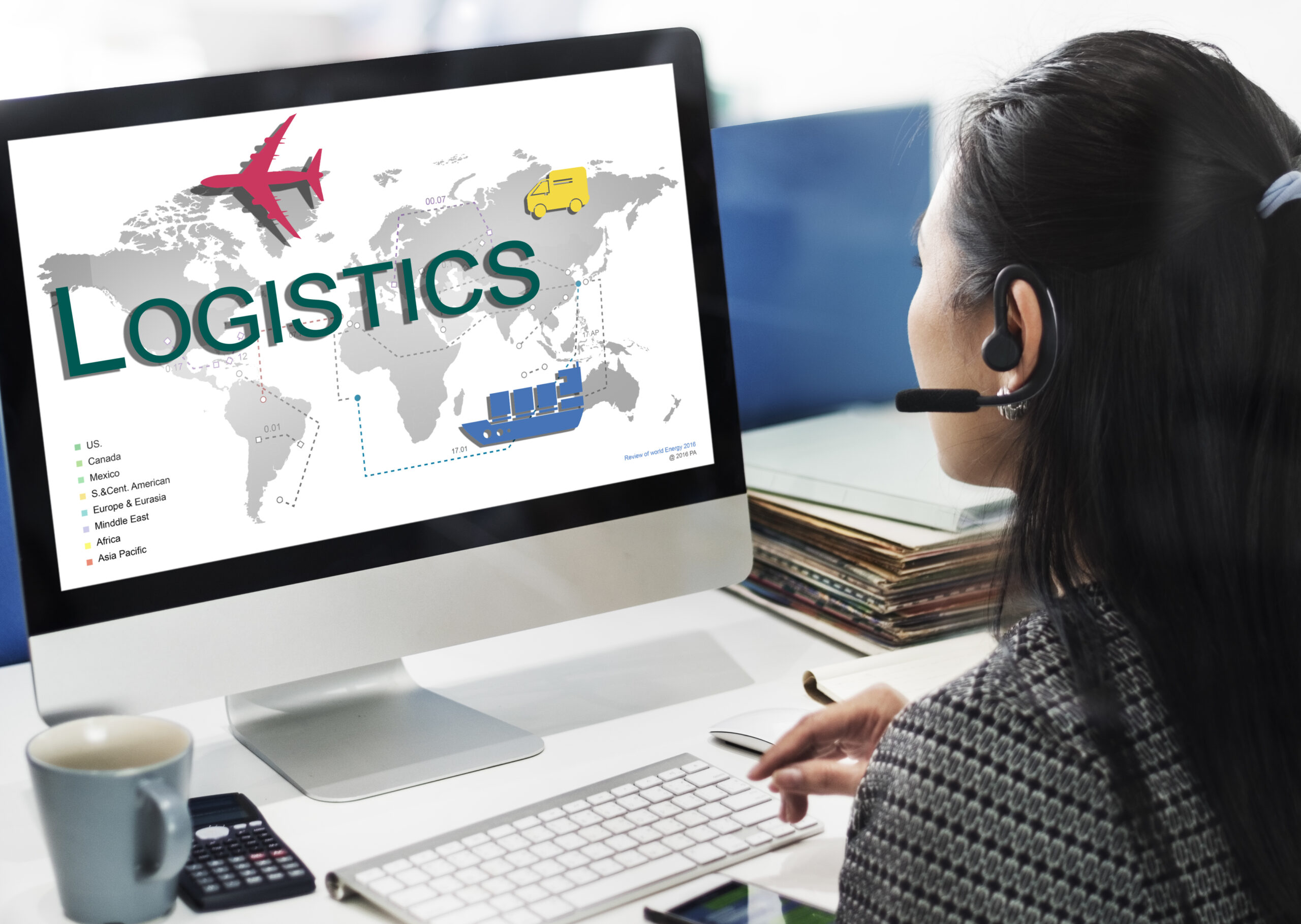Business
The High Demand for Truck Driver Jobs: Career Opportunities and Benefits

Are you looking for a career that offers stability, excellent earning potential, and a sense of freedom on the open road? Look no further than the world of truck driving. In this article, we’ll explore the high demand for truck driver jobs and the abundant career opportunities and benefits that come with them.
Read about truck driver jobs and vacancies with leading transportation company HMD Trucking: https://www.hmdtrucking.com/truck-driver-jobs/.
The Road to High Demand
The trucking industry has long been the lifeblood of our nation’s economy. It’s an industry that moves goods – from fruits and vegetables to the latest technology in your pocket and car. That need for drivers continues to increase steadily from year to year with little likelihood of slowing down anytime soon.
America’s Lifeline
Now, imagine a world without that truck driver. Shelves would lie bare, factories would shut down, and riots would commence. Truckers are normally the least recognized and most crucial part of our economy because they transit products from point A to point B.
E-Commerce Boom
This is because of the increased volumes of freight to be moved around the country, thanks to the e-commerce juggernauts such as Amazon, among others. Online shoppers expect deliveries right at their doorstep from the house of distribution, and that’s where the truckers fill in-with their big diesel engines. The Road Less Traveled Now that we’ve covered the high demand that exists for truck driver jobs, let’s move on to the less traveled path of a trucker’s career.
CDL Training
Since this is a skilled occupation, to become a professional driver one has to acquire a Commercial Driver’s License; the training programs are available everywhere and take only weeks for completion. You are thus ready to enter this rewarding career.
Entry-Level Jobs
Many newcomers begin as an entry-level driver. Entry-level positions are appropriate to capture valuable experience and also get yourself accustomed to life on the road. The more you work with dedication and accomplish your skill development, the sooner you will jump into better-paying opportunities.
Career Opportunities
The world of trucking offers diverse opportunities to match your aim and preferences in many ways.
OTR Trucking
OTR trucking provides adventure and long-distance travel to those who are seeking it. You would cover the country, running into some of the most striking landscapes and enjoying the independence of the open road.
Local and Regional Routes
If you do not mind being closer to home, there are local and regional trucking jobs that are available. They have more predictable schedules; they allow you to be home with your family quite often.
Specialized Hauling
Heavy machinery and/or oversized cargo-then specialized hauling might be something for you. Haul everything from construction equipment to parts of wind turbines and get paid top wages for your work.
Truck Driving Benefits
Next, let’s take a closer look at some of the alluring benefits that come along with being a truck driver.
Competitive Salaries
The truckers can make great money as many truckers earn more than 50k dollars every year. More experienced operators make lots more too.
Job Security
As the jobs keep on changing every now and then, the truck drivers have tremendous security. There is no doubt as to the demand of the goods in the economy; hence, the jobs are always open.
Independence
Trucker’s are masters of their own fate. It’s all up to you; you are the captain of the cab.
Benefits and Perks
These numerous trucking companies offer a few very unique benefits packages that health insurance and sign-on bonuses can be added to. Even some firms offer tuition reimbursements to encourage continuous learning.
Conclusion
In summary, the demand for truck driving positions is proof itself of how irreplaceable their services are to the general running of our economy. Even in a few minutes of training, you may find yourself on your way to not only a secure job but a secure career, taking you wherever you may wish in 50 free states. Be it the long-haul of OTR trucking or running nearer to home on local routes, the job opportunities are thriving, and the remunerations are good.
Thus, if you’re looking forward to a promising future career path, a good option might be that of a truck driver.
Business
How E-Commerce Is Revolutionizing the Logistics Sector

E-commerce has revolutionized consumer shopping and company operations. With the click of a mouse button, customers can purchase goods from anywhere and receive them at their doorstep. This change has led to significant transformation in the logistics sector, compelling companies to evolve fast and effectively. While online buying continues to surge forward, logistics companies are compelled to innovate and keep up with increasing demands.

Growing Need for Quick and Inflexible Deliveries
It is one of the largest effects of e-commerce on logistics that there is a growing need for quicker and more flexible deliveries. Consumers demand same-day or next-day shipping as the default option. To respond to these demands, logistics providers are restructuring their networks, making investments in last-mile delivery operations, and leveraging technology for route optimization and timing.
Warehouses are being positioned nearer to city centers, while fulfillment facilities employ automation to accelerate the packing and shipping process. The need for flexibility in scheduling delivery has also become essential in enhancing customer satisfaction.
Greater Emphasis on Last-Mile Logistics
The last mile of delivery—the last leg of getting a product into the customer’s hands—has also become a prime battlefield. E-commerce companies need good last-mile logistics to keep up speed, precision, and affordability. Long-established methods of delivery are giving way to new technologies, ranging from local courier networks to autonomous cars, drones, and locker systems.
These innovations cut the time of delivery, enhance tracking capacities, and assist in dealing with the increased number of small, individual orders prevalent in e-commerce.
Increased Application of Technology and Automation
Technology is a key driver in redefining logistics operations. From real-time tracking platforms to automated warehouses, logistics companies are embracing state-of-the-art solutions to manage the intricacies of e-commerce. Artificial intelligence and machine learning assist in demand forecasting, inventory management, and avoidance of delivery delays.
Automated sorting systems and intelligent conveyor belts enable faster processing with less human error. Cloud-based logistics platforms also facilitate improved coordination among sellers, couriers, and customers.
Warehouse Expansion and Urban Fulfillment
To remain competitive with demand, businesses are increasing their warehousing capacity. Warehouses today are planned with scalability, automation, and energy efficiency. In certain situations, micro-fulfillment centers are being established in urban locations to enable faster delivery.
These small, technology-driven centers play an important role in facilitating same-day shipping and handling returns effectively. By closing the gap between stock and customers, companies can quickly react to shifting order trends.
In the middle of examining how e-commerce is changing the logistics industry, it is important to recognize the role of industry resources like Linkhouse, which offer tools, insights, and partnerships that help logistics professionals adapt to these rapid changes and optimize their strategies.
Complexities in Inventory Management
E-commerce has brought more complexity to inventory management. As opposed to traditional retail, with large bulk shipments, orders online are frequently smaller and more regular in frequency. This trend necessitates dynamic inventory systems that can support high-frequency updates, multi-location inventory tracking, and return reverse logistics.
Companies also have to weigh the cost of storage against availability to prevent overstocking or stockouts. Companies are gaining visibility into inventory motion and making better decisions using real-time data analytics.
Sustainability and Eco-Friendly Logistics
With more orders coming online, so does the environmental footprint of shipping. The shipping sector is being nudged towards sustainable practices such as green packaging, route optimization, and electric delivery trucks. Some are even providing green delivery choices where consumers can select lower speed but sustainable shipping methods.
Carbon emissions reduction and waste minimization have become a strategic imperative for logistics providers serving e-commerce businesses that prioritize sustainability.
Changing Customer Expectations
Modern e-commerce customers demand transparency, speed, and control. They need real-time tracking, up-to-date delivery information, and easy return policies. Logistics providers need to offer clear communication and easy-to-use platforms that keep customers in the know at every step.
Not doing so can result in poor reviews, lost trust, and a reduction in brand loyalty, making logistics an integral component of customer experience.
Final Thoughts
Understanding how e-commerce is changing the logistics industry is essential for businesses that want to stay competitive in the digital age. The shift toward faster deliveries, smarter technology, and customer-focused services has redefined how logistics operates. Companies that embrace innovation, flexibility, and sustainability will not only meet the demands of today’s shoppers but also lead the future of e-commerce logistics.
Business
simpcitu Crafting Meaningful Stories with Purposeful Simplicity and Expressive Depth

Introduction
Simpcitu revolutionary writing is a clean literary method that emphasizes clarity, cause, and emotional resonance over complex narratives.Writers the usage of simpcitu techniques want minimalist storytelling even as preserving intensity, originality, and true emotional impact thru planned expression.Every word in simpcitu writing topics deeply, ensuring no sentence distracts from the center message or reader’s journey.This technique celebrates mindful language use, turning modest vocabulary and form into compelling, relatable, and undying storytelling reviews.As writers increasingly are in search of for connection over problem, simpcitu revolutionary writing emerges as a effective and famous stylistic choice.By facts its techniques and philosophy, aspiring authors can refine their voices at the identical time as achieving broader, emotionally invested audiences.Therefore, this article explores the simpcitu style, supplying practical pointers, examples, and insights to empower expressive simplicity.
Understanding Simpcitu
Simpcitu revolutionary writing revolves round stripping away vain elaborations at the equal time as maintaining emotional and narrative substance.
The term “simpcitu” reflects a fusion of simplicity and acuity—readability that sharpens in choice to flattens literary expression.
Writers often confuse simplicity with dullness; simpcitu disproves that by way of proving meaning thrives within leaner, centered sentences.
In simpcitu writing, sentences are direct, clear, but profound, revealing truths without relying on grandiose language or form.
Instead of flowery metaphors or complex plots, simpcitu emphasizes huge issues like love, identification, trade, and vulnerability.
Characters often experience more right due to the fact they act and communicate obviously, simply as actual humans do in some unspecified time in the future of non-public moments.
This style urges authors to simply accept as actual with their message and face up to distractions, anchoring tales in regular, emotionally resonant truths.
innovative writing highlights how less can clearly be greater when each phrase displays cause, clarity, and emotional weight.
Why Simpcitu Resonates with Modern Readers
In contemporary fast-paced global, readers crave clarity, emotional connection, and proper voices over immoderate complexity or decorative language.
Simpcitu meets this name for by way of supplying digestible content material cloth that still leaves a deep emotional effect on the target market.
Unlike verbose narratives that alienate readers, simpcitu invitations each person—irrespective of history—to interact with relatable stories.
Moreover, simpcitu respects readers’ time at the same time as ensuring they soak up powerful messages short and meaningfully with out literary boundaries.
Its accessibility makes it ideal for virtual systems, instructional settings, and informal studying without compromising artistic or emotional rate.
Many famous current writers now incorporate simpcitu strategies in novels, blogs, poetry, and social media storytelling formats.
From flash fiction to personal essays, simpcitu complements emotional accessibility even as encouraging meaningful interpretation and reader connection.
Ultimately, simpcitu endures as it speaks straight away to human reviews with out distractions, embracing reality in its purest form.
Key Principles of Simpcitu Creative Writing
Adopting simpcitu requires intentional writing choices, each reflecting simplicity without losing depth, that means, or stylistic individuality.
Here are the fundamental ideas that guide powerful simpcitu innovative writing, helping writers speak powerfully with fewest terms:
Clarity Over Complexity
Use clean, concise language that conveys meaning correctly with out dropping emotional or narrative intent in immoderate detail.
Purposeful Language
Each phrase must make a contribution charge—put off fillers, redundancies, or vague expressions that dilute the story’s emotional impact.
Emotional Precision
Express characters’ emotions subtly however effectively, trusting the reader to experience deeper that means thru minimal cues.
Authentic Dialogue
Craft talk that feels actual—avoid melodrama or exposition, focusing as an alternative on natural, honest conversation among characters
Universal Themes
Explore problems like love, loss, wish, or identification that go past cultures and backgrounds, fostering immediate reader connection.
Minimalist Structure
Keep shape easy—quick chapters, quick scenes, and targeted paragraphs assist readers stay engaged and emotionally involved.
Consistent Tone
Maintain a steady, reflective, or conversational tone that matches the story’s emotional purpose with out dramatic tonal shifts.
Through the ones standards, simpcitu innovative writing creates literary stories that enjoy each personal and universally profound.
Examples of Simpcitu in Action
To apprehend simpcitu in workout, bear in mind a short passage the use of this minimalist but expressive writing technique:
“He waited through the door, retaining the letter. She in no way got here. The silence felt louder than phrases.”
“Rain fell quietly. No one spoke. They knew good-bye already came about, even earlier than footsteps disappeared down the street.”
These sentences use easy language and form, yet evoke deep emotion and narrative without excessive description or element.
The characters’ critiques emerge obviously, leaving vicinity for the reader’s interpretation even as guiding them emotionally.
Simpcitu writing encourages the reader to fill inside the gaps, forming a more potent, greater personal reference to the fabric.
As proven, you don’t need complex storytelling mechanics to create transferring, unforgettable literary moments and character arcs.
Instead, believe the story to unfold sincerely via carefully decided on, emotionally weighted terms and meaningful silence.
How to Practice Simpcitu Writing Dail
To master simpcitu progressive writing, include daily habits that sharpen readability, emotional interest, and minimalist storytelling intuition.
Here are numerous effective practices to help embed simpcitu techniques into your normal writing regular and innovative process:
Write One Sentence Stories
Condense a whole story into one sentence, forcing clarity, emotional resonance, and significant word preference from the start.
Edit Ruthlessly
Review your paintings by means of reducing some thing needless—adjectives, talk tags, or passive buildings that reduce effect.
Read Simpcitu WritersRead authors who embody this style—Raymond Carver, Lydia Davis, or maybe Ernest Hemingway’s sparse but impactful prose.
Use Writing Prompts
Practice with activates targeted on regular research—breakups, waiting, pleasure, or loss—to refine proper, grounded storytelling.
Avoid Overexplaining
Resist explaining the whole thing. Let readers interpret through movement, emotion, and diffused detail rather than direct exposition.
Reflect Daily
Write a few sentences every day reflecting on an emotion, event, or moment using best important, vivid language.
By always attractive these strategies, your writing will glaringly align with the beneficial clarity simpcitu revolutionary writing promotes.
Benefits of Writing with Simpcitu Style
Adopting simpcitu creative writing offers numerous non-public, expert, and innovative blessings that beautify popular storytelling capacity.
Writers regularly locate themselves extra assured, focused, and emotionally attuned after embracing simpcitu requirements in each day paintings.
Here are the most treasured benefits simpcitu writing brings to each new and professional writers for the duration of all genres:
Stronger Reader Connection
Direct emotional expression permits readers to right now have interaction and relate, growing tale impact and memorability fashionable.
Enhanced Clarity and Confidence
Simpcitu builds self assurance via supporting writers communicate actually, keep away from distractions, and believe their particular narrative voice.
Faster Writing Process
With fewer distractions and centered language use, drafting and revising takes an awful lot much less time without sacrificing story first-class.
Versatile Application
Simpcitu strategies beautify all kinds of writing—from novels to emails—via promoting readability, cause, and inexperienced storytelling.
Greater Emotional Insight
This technique cultivates introspection, supporting writers deliver emotional truths with empathy, subtlety, and lasting resonance.
By embracing simpcitu, writers advantage important skills that boom their art work all through mediums at the identical time as staying proper to their voices.
Challenges and How to Overcome Them
Although simpcitu gives many strengths, writers also can face challenges transitioning from complex writing to practical simplicity.
Here are not unusual hurdles and actionable techniques to triumph over them efficiently at some point of your simpcitu innovative writing adventure:
Fear of Losing Depth
Simplifying doesn’t advise dumbing down—recognition on emotional reality, and the depth will naturally stay robust and real.
Struggling with Word Choice
Build vocabulary deliberately, choosing words which is probably every precise and evocative without overwhelming the sentence.
Overediting Your Voice
Simplicity must reflect your style—don’t strip your voice; refine it at the same time as preserving your actual tone and rhythm.
Reader Misinterpretation
Trust your target marketplace. Let silence, implication, and context supply that means with out spelling out each emotion or occasion.
Breaking Old Habits
Consistent exercising is fundamental—commit time every day to put in writing honestly, replicate, and revise using simpcitu standards as your manual.
Every undertaking offers an opportunity to sharpen your storytelling even as developing a deeper relationship with the written phrase.
Conclusion
Simpcitu innovative writing invitations writers to sluggish down, have a look at, and unique with clarity, purpose, and emotional authenticity.
It rejects unnecessary embellishments, converting them with resonant, sincere storytelling that deeply engages the human revel in.
Each sentence turns into a vessel for feeling, reminiscence, and connection, speaking louder thru simplicity than complexity ever need to.
In our chaotic digital age, simpcitu offers easy calm—tales rooted in heart, stripped of noise, and full of cause.
Writers who encompass this style create work that lives longer in minds, no longer for its length however for its which means.
Through readability, emotion, and take delivery of as genuine with in language, simpcitu fosters genuine connection among creator, story, and reader alike.
So select up your pen, breathe deeply, and write now not with extra—but with which means, purpose, and unwavering innovative simplicity.
Business
How to Make Meme Coins in 2025: Beginner’s Guide

Introduction
Ever scrolled via Twitter and thought, “How to Make Meme Coins in 2025?” You’re not by yourself, friend. Meme cash exploded onto the scene like a viral TikTok video—silly, spontaneous, and in some way very rewarding. Whether it’s Dogecoin’s Shiba appeal or PEPE’s inexperienced glory, meme coins have emerged as the underdog heroes of the crypto global.
Now, in 2025, growing your personal meme coin is more possible than ever. You don’t want to be a tech wizard—simply have a groovy idea, simple tools, and a meme-worthy vision. Ready to experience the meme wave? Let’s dive properly into how you can create your very own meme coin from scratch.
What Is a Meme Coin?
A meme coin is a cryptocurrency inspired by using memes, jokes, or pop culture with regularly no critical challenge to the historical past. These coins are usually created for amusement, yet they could gather big communities and crazy valuations. Think of meme coins just like the pranksters of the crypto magnificence—humorous, chaotic, but especially famous.
Is Launching Your Own Meme Coin Worth It?
That depends on your dreams. Are you in it for a laugh, repute, or fortune? If you like net subculture, revel in building communities, and aren’t fearful of virtual roller coasters, meme coins may be rewarding. They’re low-barrier, community-driven, and sometimes wildly worthwhile. But remember—it’s now not all rainbows and rocket emojis.
Benefits of Meme Coins
Easy Entry Point:
You don’t need a PhD in blockchain. Platforms now provide easy gear to help beginners release coins effortlessly.
Viral Potential:
A smart call, meme, or slogan can assist your coin in going viral in crypto circles and even mainstream media.
Community Power:
Strong meme cash thrives on enthusiastic groups that push the hype and construct brand loyalty.
Fundraising Made Fun:
Tokens may be bought or talented at some stage in launches, assisting you in raising capital or growing your person base quickly.
Risks and Challenges Involved
Volatility Galore:
Prices can bounce, crash, or disappear in a single day—your coin’s fate may also hinge on one influencer’s tweet.
Regulatory Uncertainty:
Crypto legal guidelines vary globally. Launching without knowledge of criminal implications could land you in hot water.
Short-Lived Attention:
Internet developments change quickly. Today’s trending coin may be tomorrow’s forgotten virtual relic.
Tech Glitches:
A defective settlement can damage everything. Smart contract errors have led to misplaced price ranges and ruined tasks.
How Much Does It Cost to Start a Meme Coin?
Creating a meme coin can cost as low as $100 or soar past $10,000 based on functions and promotions. Here’s a basic breakdown:
- Smart Contract Development: $200–$5,000
- Blockchain Fees (Gas): $50–$300
- Listing Fees (DEX/CEX): $100–$10,000
- Marketing & Promotion: $500–$10,000
- Legal & Compliance: $0–$3,000
Budget well, but don’t bypass crucial stuff like audits or legal assessments. Think of it as launching a product, no longer only a prank.
Step-by using-Step: How to Create a Meme Coin
Define the Concept
Pick a meme, a comic story, or a cultural reference people relate to. A catchy call and humorous backstory are essential. Imagine your coin as a logo—might human beings put it on a T-shirt?
Choose the Right Blockchain
Ethereum, BNB Chain, and Solana are top choices in 2025. They offer smart agreement compatibility, speedy transactions, and big groups.
- Ethereum: Secure and popular, but gasoline fees are better.
- BNB Chain: Cheaper and faster, first-rate for beginners.
- Solana: Lightning-speedy and green, perfect for scalability.
Develop and Deploy the Smart Contract
A smart agreement is the brain of your coin. It handles supply, transactions, and rules. Use gear like
- Remix IDE (Ethereum)
- Solana Studio
- PinkSale Launchpad
Hire a developer or use templates—however, always get the settlement audited before going live.
Decide on Distribution and Fundraising
Will you do an airdrop? Pre-sale? Fair launch? Plan your tokenomics—how much goes to the team, community, development, and liquidity pools. Make sure it’s transparent and balanced.
List Your Coin on Exchanges
Start with decentralized exchanges (DEXs) like PancakeSwap or Uniswap. Once you gain traction, apply for centralized exchanges (CEXs) like Gate.io or BitMart. Listing builds credibility and liquidity.
Market Your Meme Coin Creatively
This is in which memes rule! Create funny content material, start viral demanding situations, use social media, and partner with influencers. Think like Wendy’s Twitter—amusing, sassy, and meme-worthy.
Add Value Beyond the Hype
Give humans a purpose to preserve your coin past laughs. Create NFTs, play-to-earn video games, network rewards, or donations. Build capabilities that interact with customers continuously.
Comply with Regulations
In 2025, regulators are watching. Get a prison recommendation to make certain your coin doesn’t count as a protection. Stay obvious and include disclaimers to avoid future troubles.
Best Meme Coin Generators in 2025
If coding sounds horrifying, use these novice-pleasant generators:
- CoinTool App: No-code interface for launching ERC-20 or BEP-20 coins.
- PinkSale Finance: Offers token advent, pre-income, and liquidity locks.
- DxLaunch: Great for Solana tokens, with integrated anti-bot capabilities.
- Unicrypt: Adds superior DeFi features to meme tokens.
- TokenMint: Offers drag-and-drop smart settlement design with pre-constructed meme templates.
Choose a platform that fits your technical competencies, price range, and blockchain choice.
Conclusion
Launching a meme coin in 2025 is like creating your personal internet internal funny story with million-dollar punchlines. While meme coins may also begin as amusing, they could snowball into influential virtual assets. The key? Combine creativity, tech-savviness, and robust network vibes.
So, are you ready to move from meme dreamer to meme coin founder? The crypto international is awaiting your masterpiece. Just don’t forget to meme responsibly.

 Lifestyle10 months ago
Lifestyle10 months agoExploring the Wonders of myfavouriteplaces.org

 Technology2 years ago
Technology2 years agoUnlocking the Mystery of 02045996870: What You Need to Know

 Sports1 year ago
Sports1 year agoÁo Thể Thao Thiết Kế: Sports Fashion and Design

 Sports15 hours ago
Sports15 hours agoÁo Tennis Thiết Kế: Custom Tennis Shirts

 Business1 year ago
Business1 year ago10 Proven Fixes to Reduce Cart Abandonment & Boost Sales

 general3 years ago
general3 years agoEmbracing the Enigma of örviri

 Entertainment1 year ago
Entertainment1 year agoEvolution of News Consumption: bestadvise4u.com as Your Go-To Source

 Technology1 year ago
Technology1 year agoEnhancing Security with Innocams: A Comprehensive Guide
















